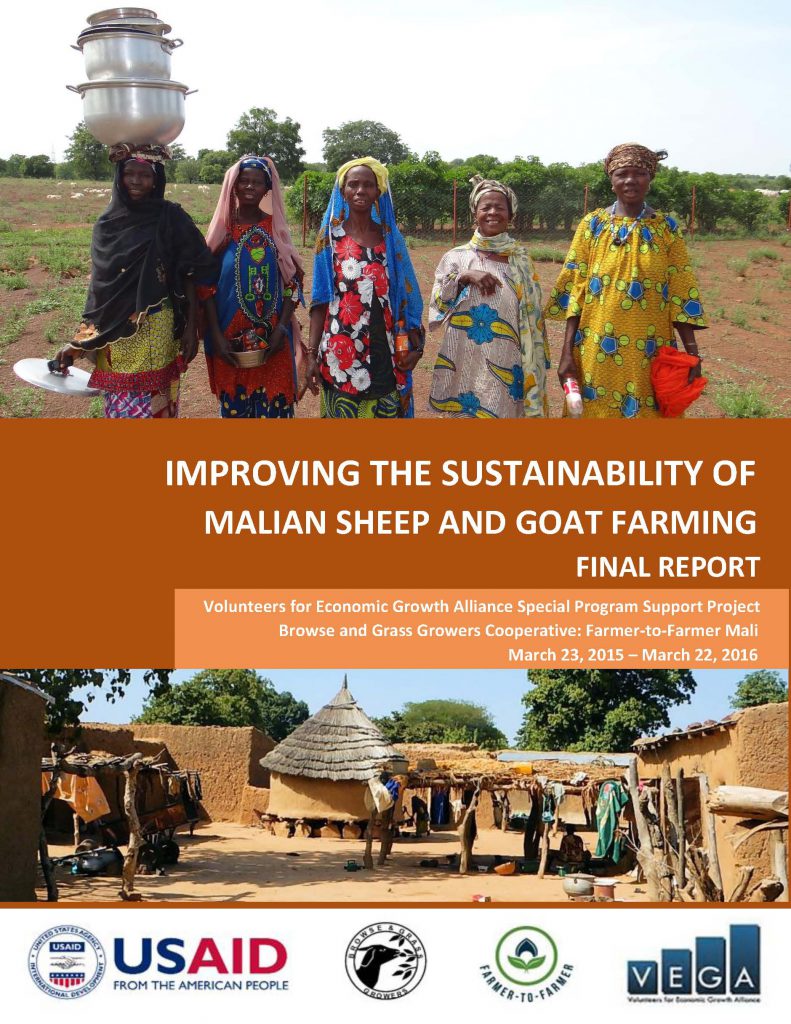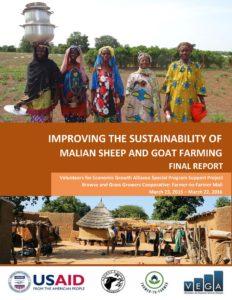
Common Pastures: Sustaining Flocks, Farms and Families
Sep. 7 | 2016
Meeting feed and forage requirements of small ruminants is the most urgent need for livestock smallholders in the agro-pastoral systems of Mali according to a meta-analysis of documentation associated with 36 USAID-funded F2F volunteer assignments and involved input from over 1,100 smallholder farmers (Cibils et al. 2015, Challenges and Opportunities for Agro-pastoral Livestock Smallholders in Mali. Outlook on Agriculture 44: 69-80).

Challenge
The small ruminant paradox: In the rural villages crop cycles dictate access to grazing resources for small ruminants in contrast to the migrating, grazing patterns of traditionally herded flocks. During the rainy season, when quality and quantity of forages are the highest and grazing would be the most nutritious, the smallholder’s sheep and goats are generally confined or tightly controlled to prevent crop loss.
Conversely, during the dry season when forages are dormant and scarce, small ruminants are allowed to freely scavenge among crop residues and native forage that have over-matured with resultant low-nutrient value. Young, growing, pregnant and lactating animals suffer the most under these methods and their genetic potential is seldom reached. This system results in high levels of abortions, delayed puberty and long intervals between parturitions, high pre-weaning and adult mortality, and low offtake rates. This paradoxical mismatch of nutrition to small ruminant life cycle needs severely undermines food security.
Initiative
Grazing provides basic nutrition for ruminants and is a critical asset for low-resource farmers. The common but often false assumption, that small ruminant’s nutritional requirements can be fully met through grazing is probably based on pastoralism traditions. In this model the flock is constantly moving forward across the sahel and savanna, away from manure harboring parasites and to fresh forage. As long as their movement is unobstructed, and the animals can pick and choose, nutrition is likely to be adequate.
In contrast, smallholder flocks are confined to common grazing lands that are frequently overgrazed, contaminated by manure harboring parasites, and have limited fresh browse options. In this system supplementation is critical. GPS tracking technologies were used to better understand the quality and quantity of available forages, and the likely amount of energy expended harvesting it. Farmers were educated on overgrazing, inadequate grazing, and erosion threats. Improving pastoral land use and identifying local feed supplementation options are important first steps to improving food security.
[efsbutton style=”” size=”” color_class=”” align=”left” type=”link” target=”false” title=”Read Annual Report 2016 ” link=”https://commonpastures.org/wp-content/uploads/2016/09/USAID-Final-Milestone-Report-May-15.pdf”]

